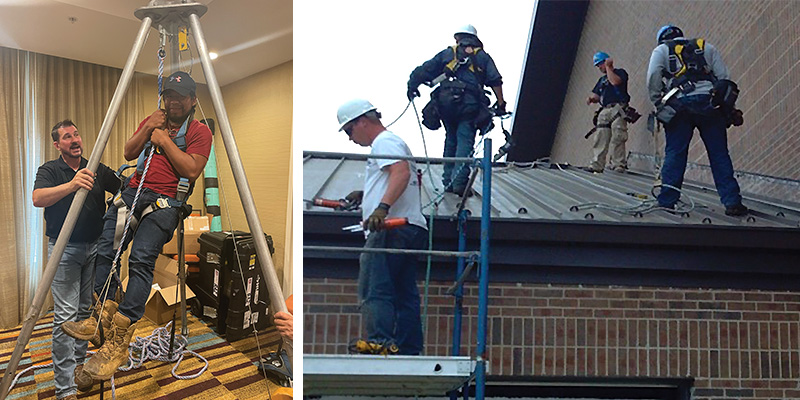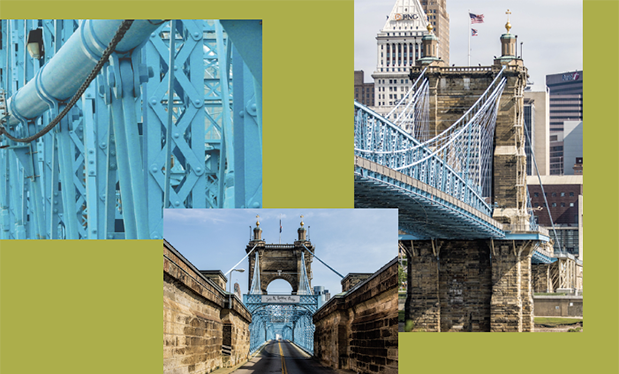
Government statistics show sheet-metal work continues to have safety concerns that have been a focus of the roofing industry for years. One of those risks is the all too familiar fall-related injuries and deaths. But other safety concerns with sheet-metal installation, such as training, weather, sharp edges and material handling, shouldn’t be overlooked.
Falls
In 2021, the Bureau of Labor Statistics reported the construction industry experienced 986 fatal worker injuries of which 390 were from falls. During that same time, there were 123 roofing worker fatalities of which 99 were from falls. Falls account for 39% of total fatalities in the construction industry and 81% of roofing industry deaths.
On May 1, the Occupational Safety and Health Administration issued a new National Emphasis Program that focuses greater enforcement efforts on fall prevention.
The NEP coincided with the start of OSHA’s annual National Safety Stand-Down to Prevent Falls in Construction campaign. Since the event’s inception 10 years ago, NRCA and its members have participated to bring greater awareness to fall prevention.
In the NEP, OSHA states: “The goal of this NEP is to significantly reduce or eliminate unprotected worker exposures to fall-related hazards in all industries that can result in serious injuries and deaths. OSHA’s compliance safety and health officers are authorized to initiate inspections under the scope of this NEP whenever they observe someone working at heights. These observations may occur during the Certified Safety and Health Official’s normal work-day travel or while enroute to, from or during other OSHA inspections. If a potential imminent danger condition exists, an inspection will be initiated.”

There should be little wonder OSHA is focusing attention on falls. In 2022, the roofing industry was cited for more than $38 million in penalties, and $30 million (79% of those penalties) were related to fall protection.
Training
Training is a critical part of any company’s success. All too often, employers forget this, but they are required to train employees to safely perform all assigned tasks. They also must provide training in a language and manner workers can understand.
OSHA requires safety training, specifically fall-protection training, be conducted by a competent person. OSHA defines a competent person as someone who can identify existing, predictable hazards in the surroundings or working conditions that are unsanitary, hazardous or dangerous to employees and who has the authority to take prompt corrective measures to eliminate them.

Safety training should include information about how to recognize hazards and procedures to minimize them. NRCA recently developed a new two-day Fall Protection Trainer Class that takes a deep dive into fall prevention and equips trainers with the tools to successfully train employees.
Pre-job
Employers are required to not only train employees but also provide them with a workplace free from recognizable hazards. The General Duty Clause from The OSH Act of 1970 requires that in addition to compliance with hazard-specific standards, an employer must furnish each employee with a place of employment free from recognized hazards that cause or are likely to cause death or serious physical harm.
This requirement also extends to estimators and salesmen who often visit job sites before crews. By training employees to use and perform pre-job assessments like those in a job hazard analysis or NRCA’s Deck Integrity Tool (both available on NRCA’s website, nrca.net), employers can identify and eliminate or control hazards before workers arrive at a job site. It’s a simple process that can help meet OSHA’s requirement of worksites being free of recognizable hazards.
On the job
Proper training and pre-job inspection can eliminate or reduce many safety issues, but risks still will be present and should be addressed. As discussed, falls continue to be the top concern while working at heights, but other risks must be addressed when working with metal roof systems.
Weather
Weather can create a number of risks when it comes to working with sheet metal. Rain, snow and ice can create slip and fall hazards on metal roof systems that add to risks of working at heights. Even dew or frost present in the early morning can create the feeling of working on an ice skating rink. Slip-resistant footwear can help but only provides some level of safety when used.
In addition, it’s best not to work on metal roof systems anytime lightning and thunderstorms or other potential issues with electrical hazards are present.
Wind also can play a huge role in metal roof system installation. Wind can blow against metal panels and cause workers to lose their balance, creating the potential for slips and falls.
And though a nice blue sky and sunshine may seem to be the perfect conditions for a workday, bright days can wreak havoc on workers’ eyes because metal systems add to the amount of light reflected from a roof’s surface. Workers will need to wear tinted safety glasses or specialized safety glasses to prevent damage from the sun’s harmful rays. The sun also can raise the temperature of a roof’s surface. OSHA issued an NEP regarding heat in 2022 stating employers must plan for proper water, rest and shade on job sites to avoid the risks associated with working in excessive heat.
To avoid having workers exposed to such conditions, employers must continually monitor weather and avoid sending workers to jobs at the times of day when these hazards may be more prevalent.
Sharp objects
From the time metal products are in the shop to final installation, cuts and lacerations are a major concern for workers. Covering sharp edges and corners during transport can be accomplished with the use of rubber edging, cardboard edging or other means. But these coverings will be removed on-site, so an additional means of protection, such as cut-resistant gloves and arm sleeves must be considered. Even better are cut-resistant gloves with rubber-dipped palms, which offer additional gripping power while handling metal.

In addition, fall-protection equipment may require some level of cut resistance. If workers are near an area with an exposed edge, for example, it’s important the means of connection won’t fail or be damaged by the hazard if a fall occurs. Specialized leading-edge equipment may be required on job sites and must have specific designations such as SRL-LE or LE, which means even if fall protection equipment contacts a sharp edge, it will not fail.
Handling and installation
The main risk when handling metal roofing materials is the potential for cuts, punctures and lacerations, but the repetitive nature of installation and overall sizes of metal products used also are causes for concern. To avoid many of these risks, employers should use multiple workers for installation; mechanical equipment for assistance when moving materials; and work-reduction methods, such as job rotation, to avoid worker stress and strain.
Another risk is lead, which commonly is found in a variety of sheet-metal materials. Whether they are installing a complete lead-coated system or soldering seams and joints with lead, workers need to be aware of the hazards. PPE such as gloves and respirators must be considered, but safety doesn’t end there. Proper hygiene cannot be ignored, and it is critical to allow employees breaks from potential lead contamination. Hygienic stations, such as proper handwash stations, should be present on every job where lead is being used.
Cover all the bases
Although it is important the roofing industry continues to focus efforts on reducing falls, we also must be diligent in safety training regarding all potential hazards employees may face on the job before any workers become just another statistic.
To learn more about NRCA’s safety offerings, go to nrca.net/safety; to learn more about NRCA safety classes, go to nrca.net/events
RICH TREWYN is NRCA’s director of risk education and training.


